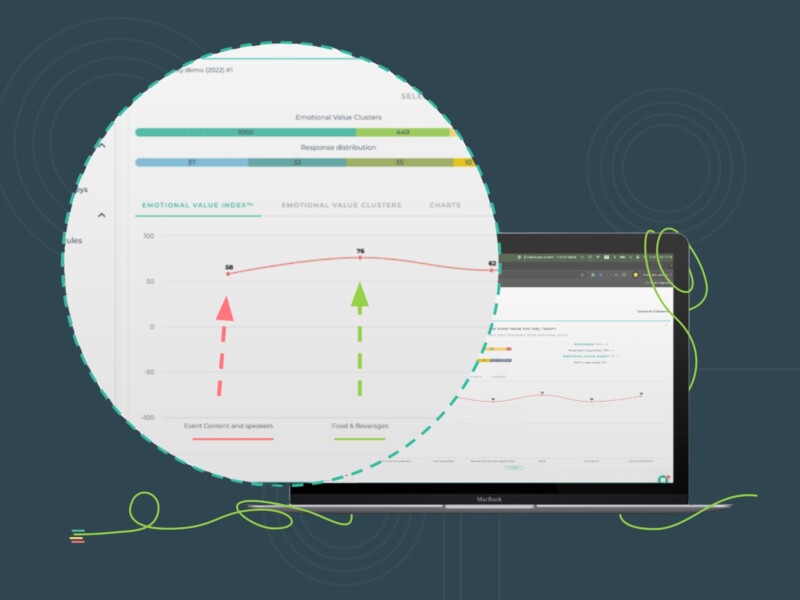Emotional Value Index (EVI®), in a word, is brilliant. Not to brag, but the many client testimonials and data prove it to be one of the most effective and versatile CX metrics available today. In this article, we explain why it was developed and how it resolves the drawbacks of other CX metrics.
The shift from products to experiences
The ever-evolving customer expectations shape how brands create and present their buying journey. CX metrics have helped brands understand their customers and improve their customer journey accordingly.
In the 1990s, the hallmark of fabulous customer experience was pinned to a great product or service. It was therefore assumed that if a customer is satisfied with the product/service, the likelihood to purchase again or recommend it to others is high. Net Promoter Score (NPS) was developed to measure CX from the lens of loyalty and advocacy.
In the first years of the 2000s, the quality of customer experience was assessed by the engagement level between the brand and customers. There was also an increased emphasis on employee engagement as it inevitably contributes to the efficiency of customer service. Customer Effort Score (CES) was developed to minimize customer friction by fixing time lags and other bottlenecks that hinder seamless customer service.
Today, customers are more inclined towards brands with a story than businesses that mere highlight the benefits of products or services. They are on the hunt for experiences and favor “feel-good moments” over mere “products.” Emotions play a major role here, and if you can evoke the right emotions at the right time in the buying journey, you most likely have a loyal client on board. EVI® was born to help brands optimize the emotional experience of customers.
The power of emotions
Emotions influence customer purchase decisions to a great extent and can even override our rational decision-making ability. Today, a lot of customers, especially millennials and gen-z, are looking for products that appeal to them emotionally. Think about it. From McDonald’s “I’m Lovin It” slogan to Coca-Cola’s “Open Happiness” campaign, many big brands advertise their products through emotions, and have achieved profound success in doing so!
Brands can learn a lot from customer emotions and utilize them for growth. EVI® was created to help businesses understand their customer personas effectively and cater to their expectations. It is the solution for brands struggling to keep up with customers’ chase for experiences.
With an EVI® survey, you can understand what aspects of the buying journey are frustrating or difficult for customers and the aspects that are satisfactory. If customers find the buying journey effortless and rewarding, they are more likely to come back. You can read our article on how customer emotions are linked to purchasing behavior to understand the role of emotions.
Limitations of other CX metrics
While CX metrics like NPS, C-SAT, and CES are very useful for assessing the buying journey and the overall customer experience, they come with a set of limitations. For example, using NPS alone is not sufficient because the survey can only be applied for the post-purchase phase. It also gives a skewed picture of customer satisfaction as it’s limited to advocacy alone.
EVI® is a versatile metric that can be used to assess a multitude of aspects like customer satisfaction, loyalty, and retention. More importantly, EVI® complements other KPIs well. When used together, they enhance the quality of the data, and you get sufficient contextual information to validate your findings and conclusions.
You can also combine EVI® data with other organizational data to improve the overall performance of the brand. For example, you can correlate EVI® data with sales data to determine the emotions that point to bigger purchase sizes. By identifying the emotions that drive up sales, brands can tweak their CX strategy toward growth more effectively.
CX at both micro and macro level
EVI® survey can be used to measure any touchpoint in any phase of the customer journey. It is a great metric to identify the strengths and issues in the buying journey individually. From the moment a customer encounters the brand until the post-purchase phase, you can identify how they respond to your brand emotionally.
At the same time, you can also use EVI® to gain an overview of the entire journey. With EVI®, it’s easy to identify the pitfalls and fix them. It helps you view your brand from your customer’s perspective and adopt the right strategy. Our Feedbackly platform can help you review analytics at the macro level very easily.
EVI® has become an indispensable metric for customer journey analysis. When used right, you can reap many benefits from this innovative metric and improve your customer experience strategy. Want to learn more about Emotional Value Index? Watch our free EVI® Q&A webinar to find out how you can boost your sales with the help of this revolutionary CX metric.




